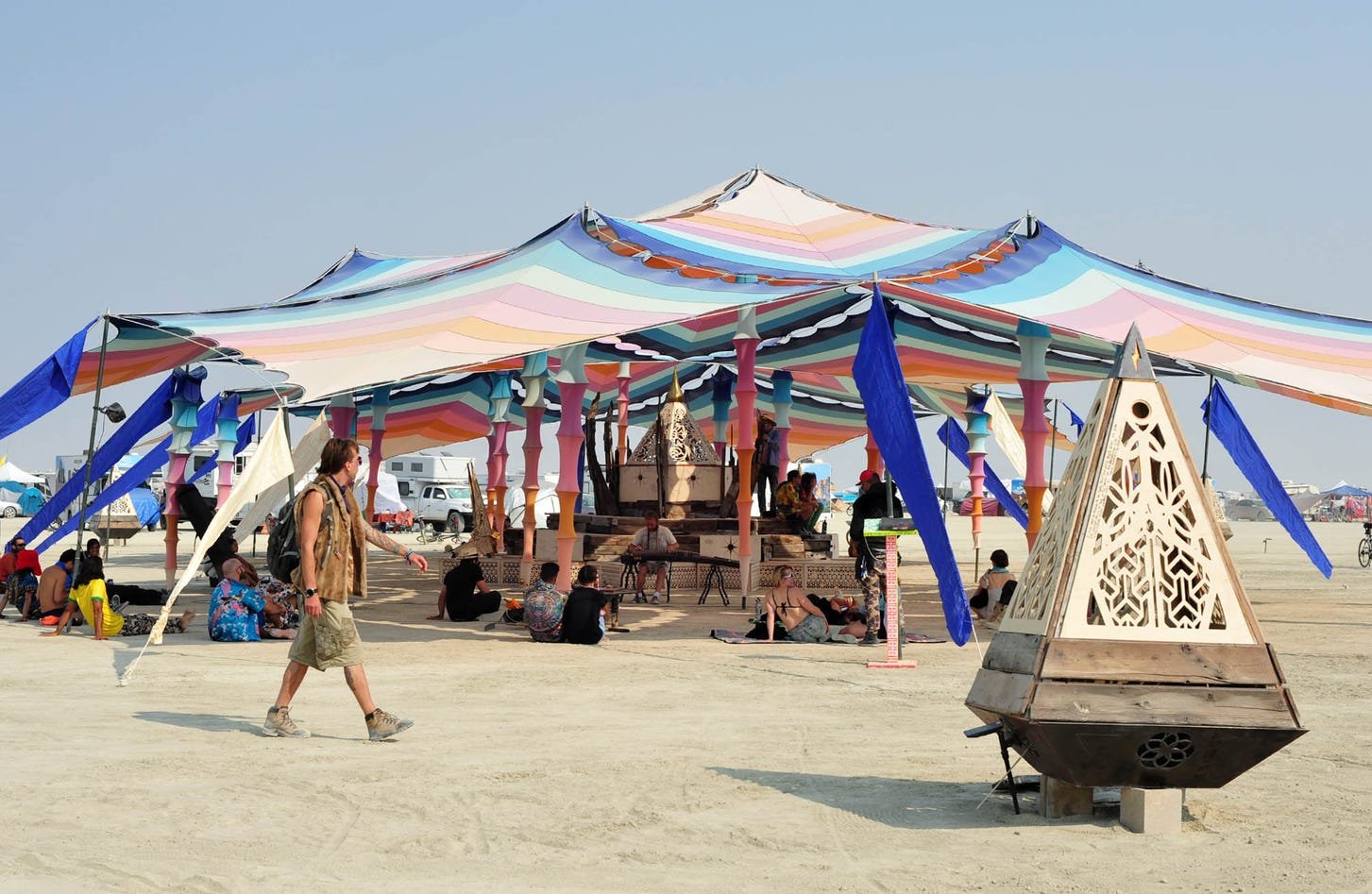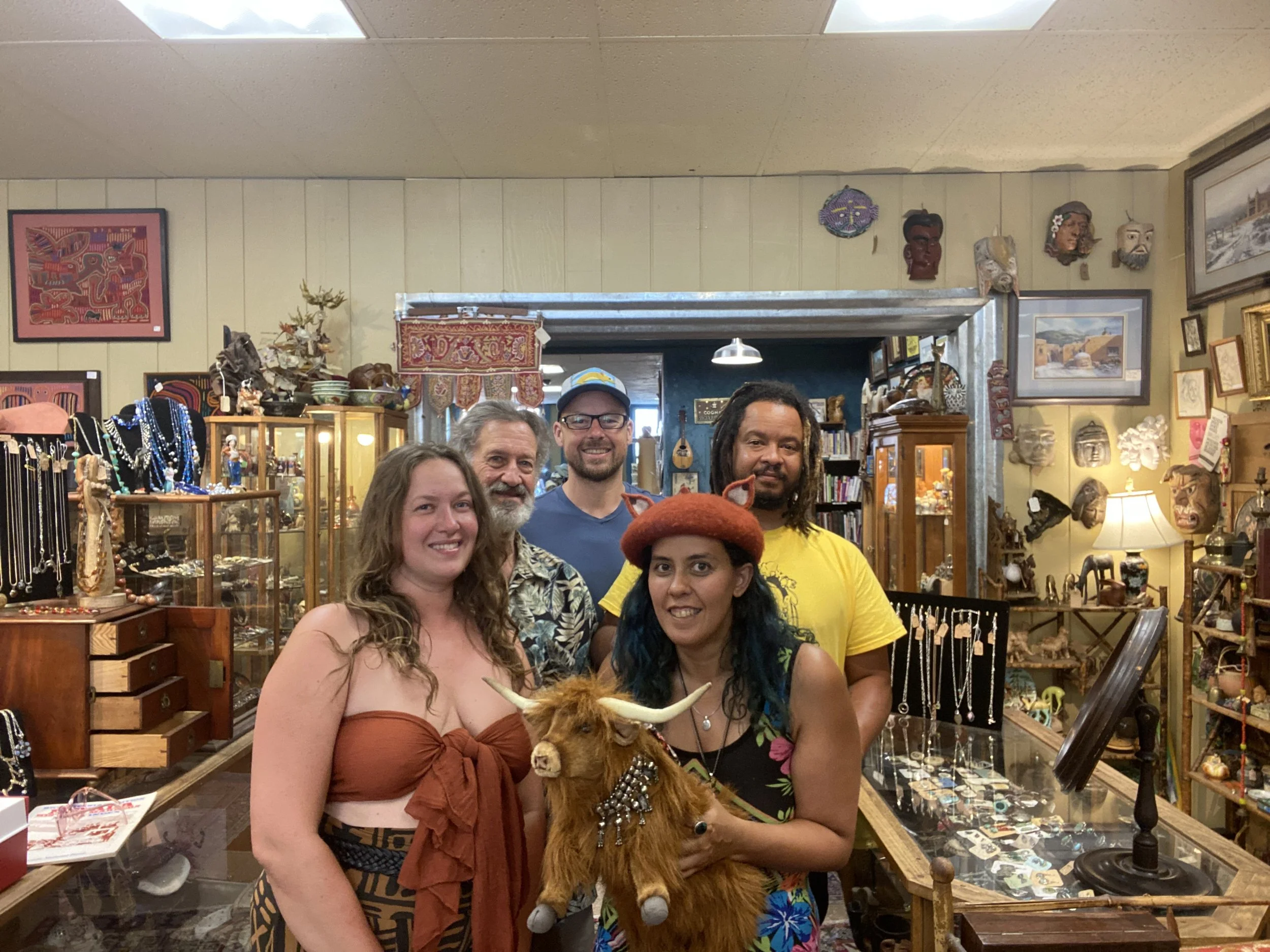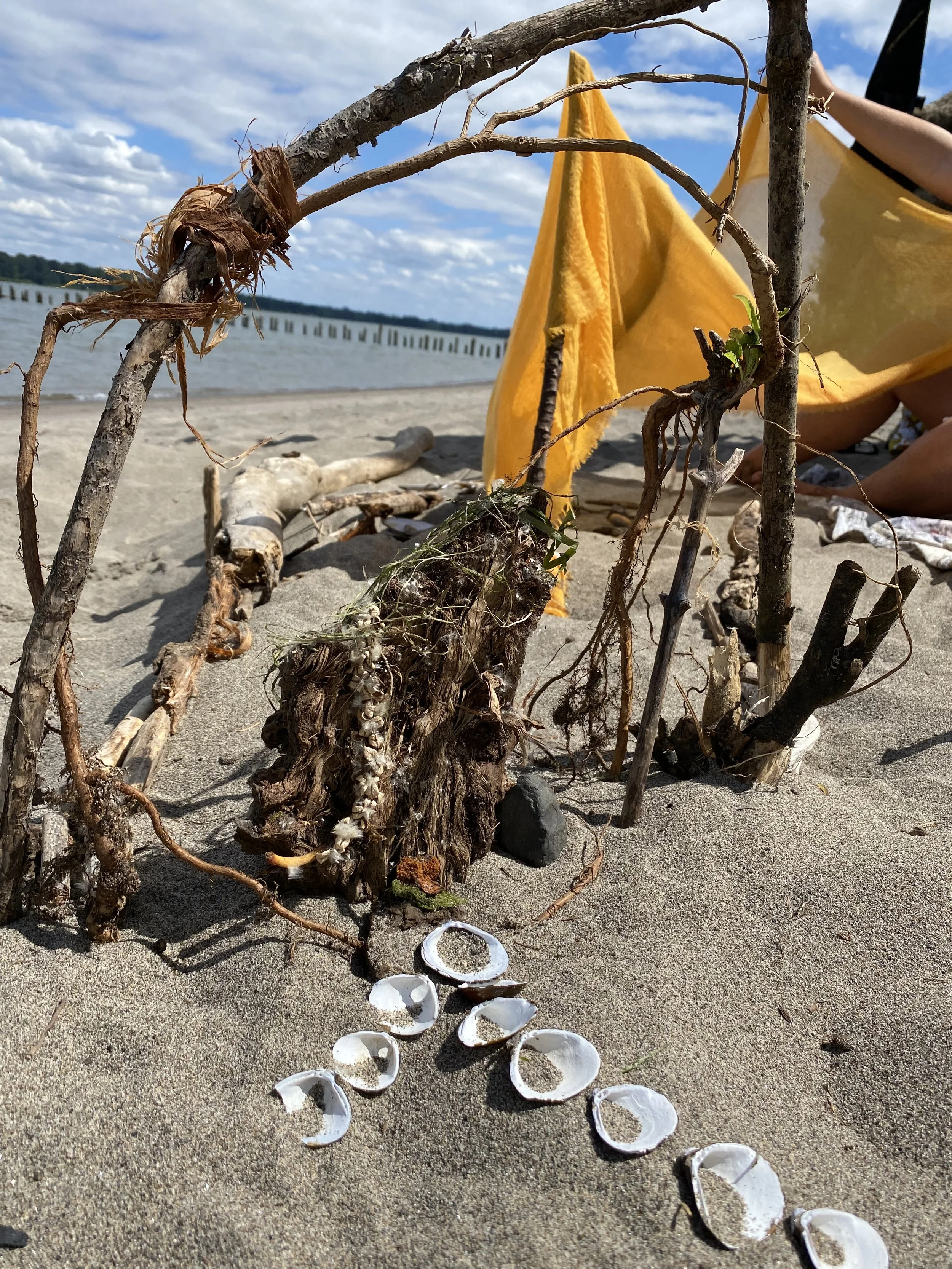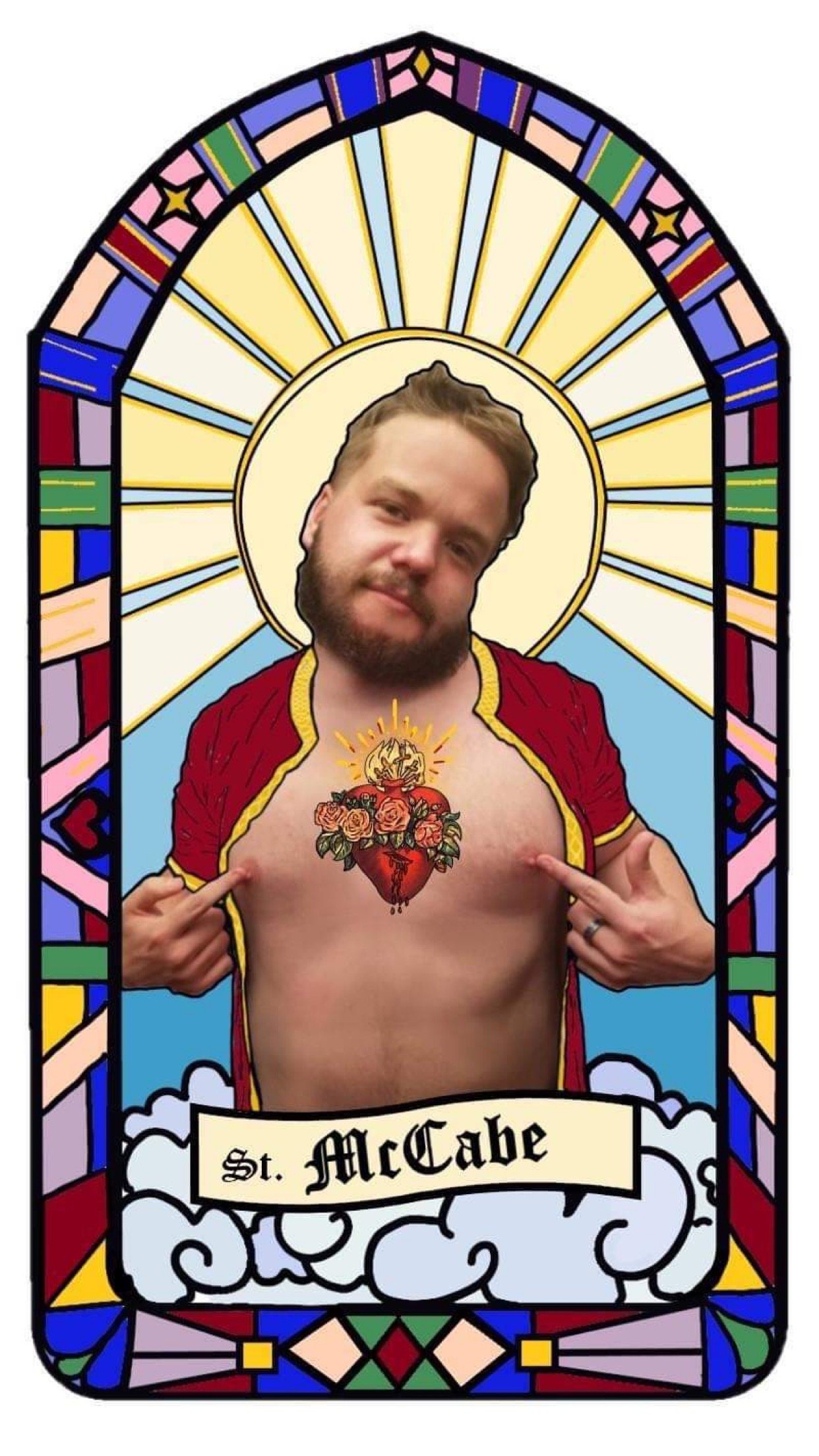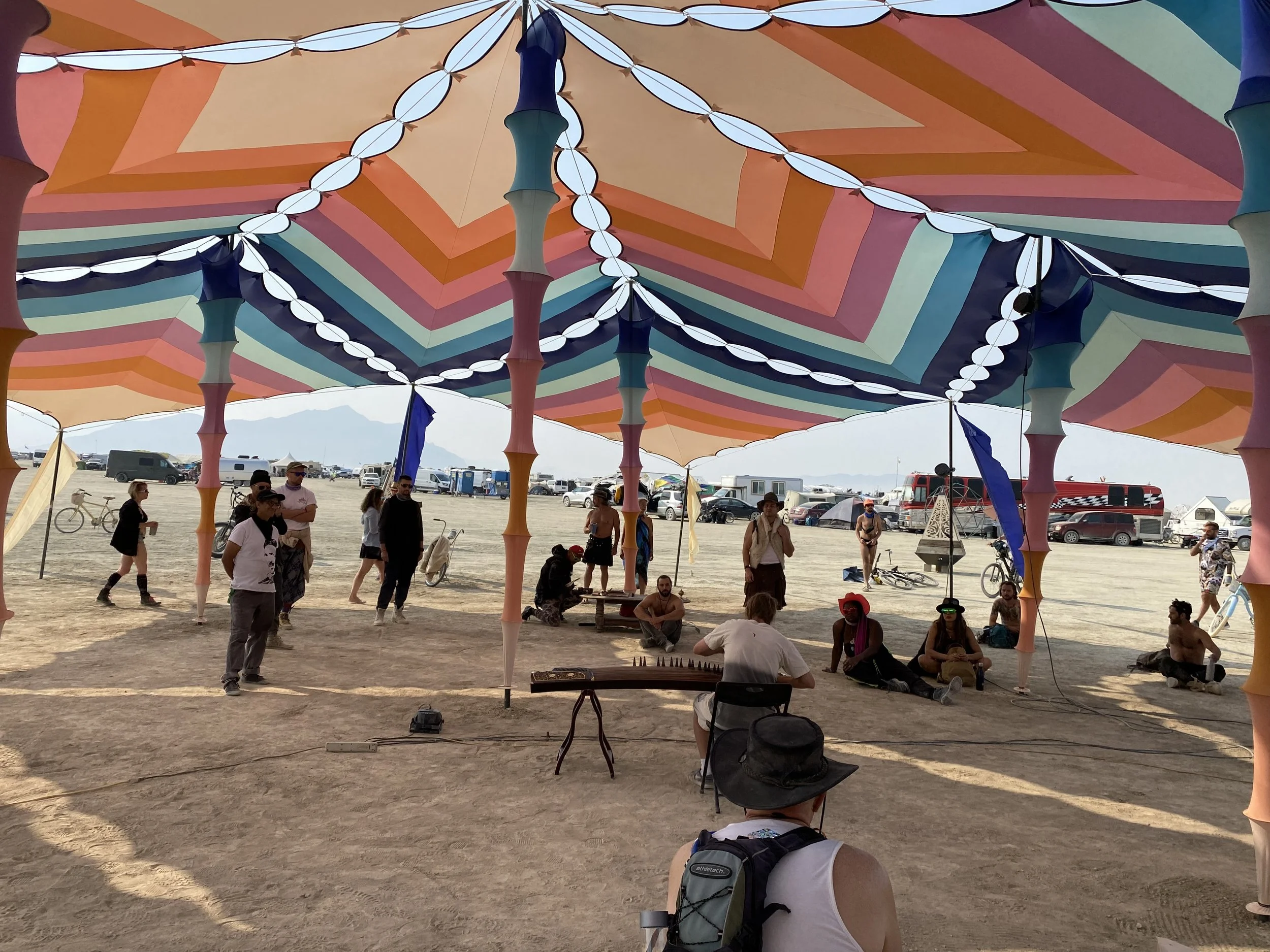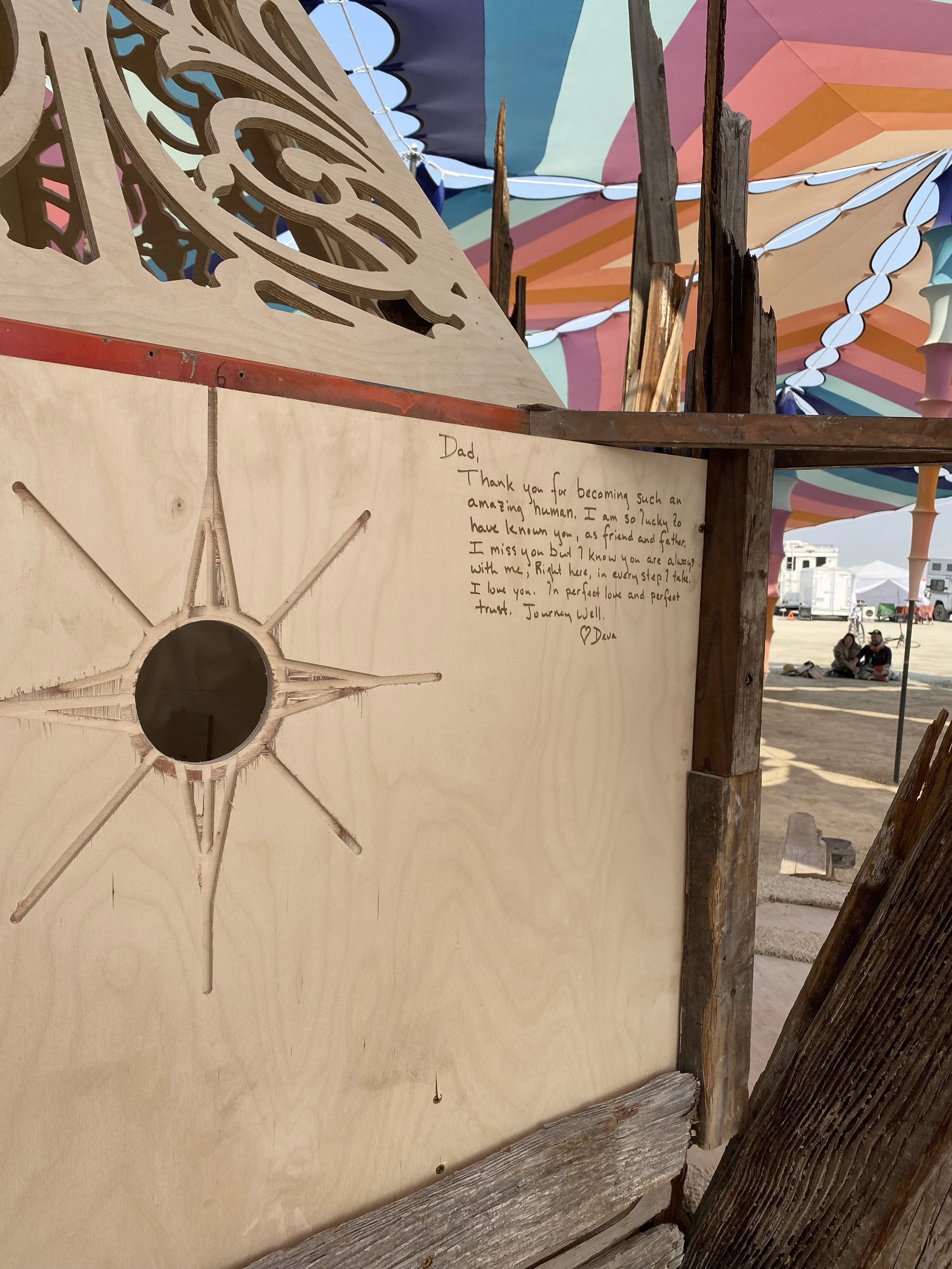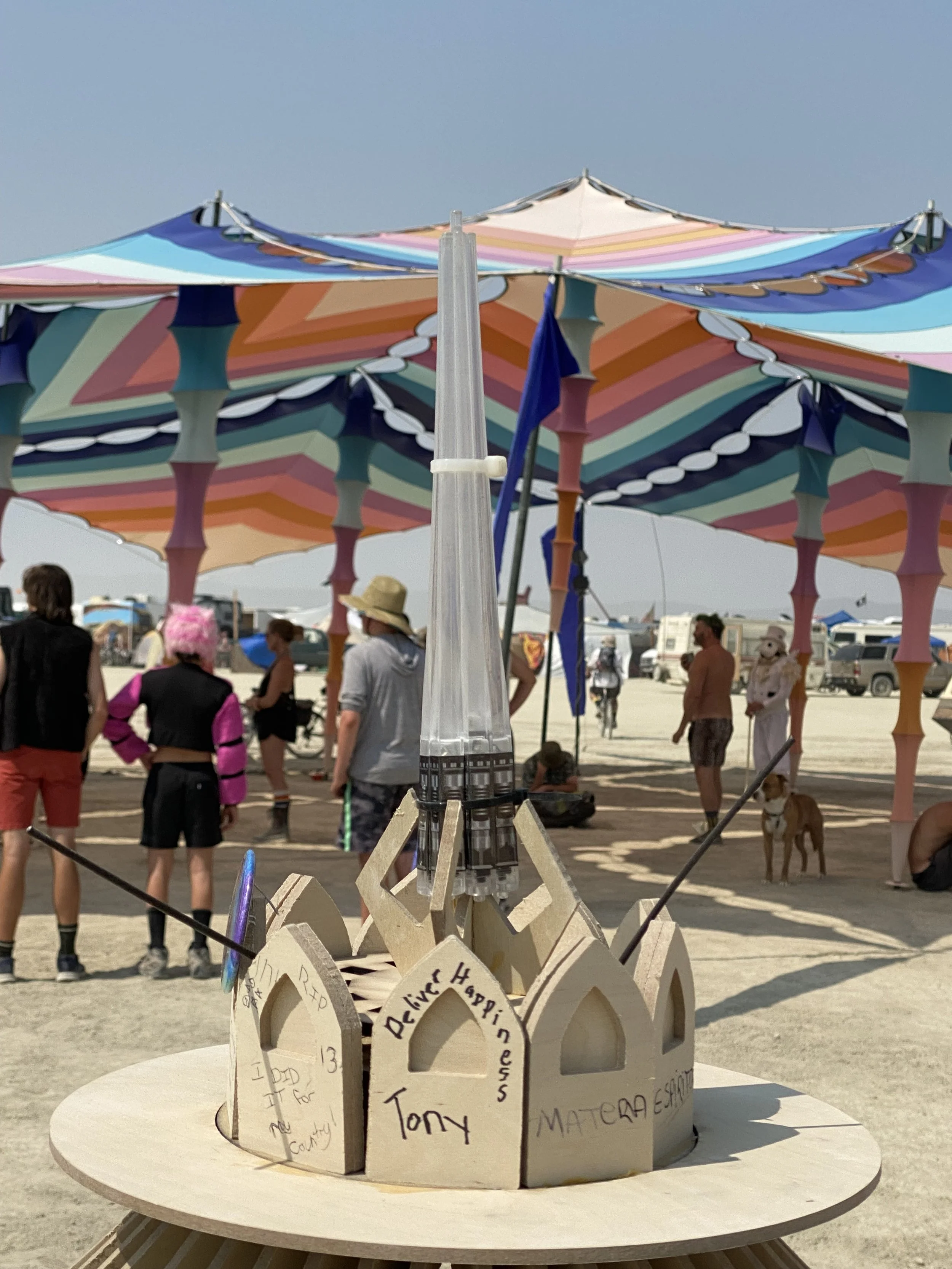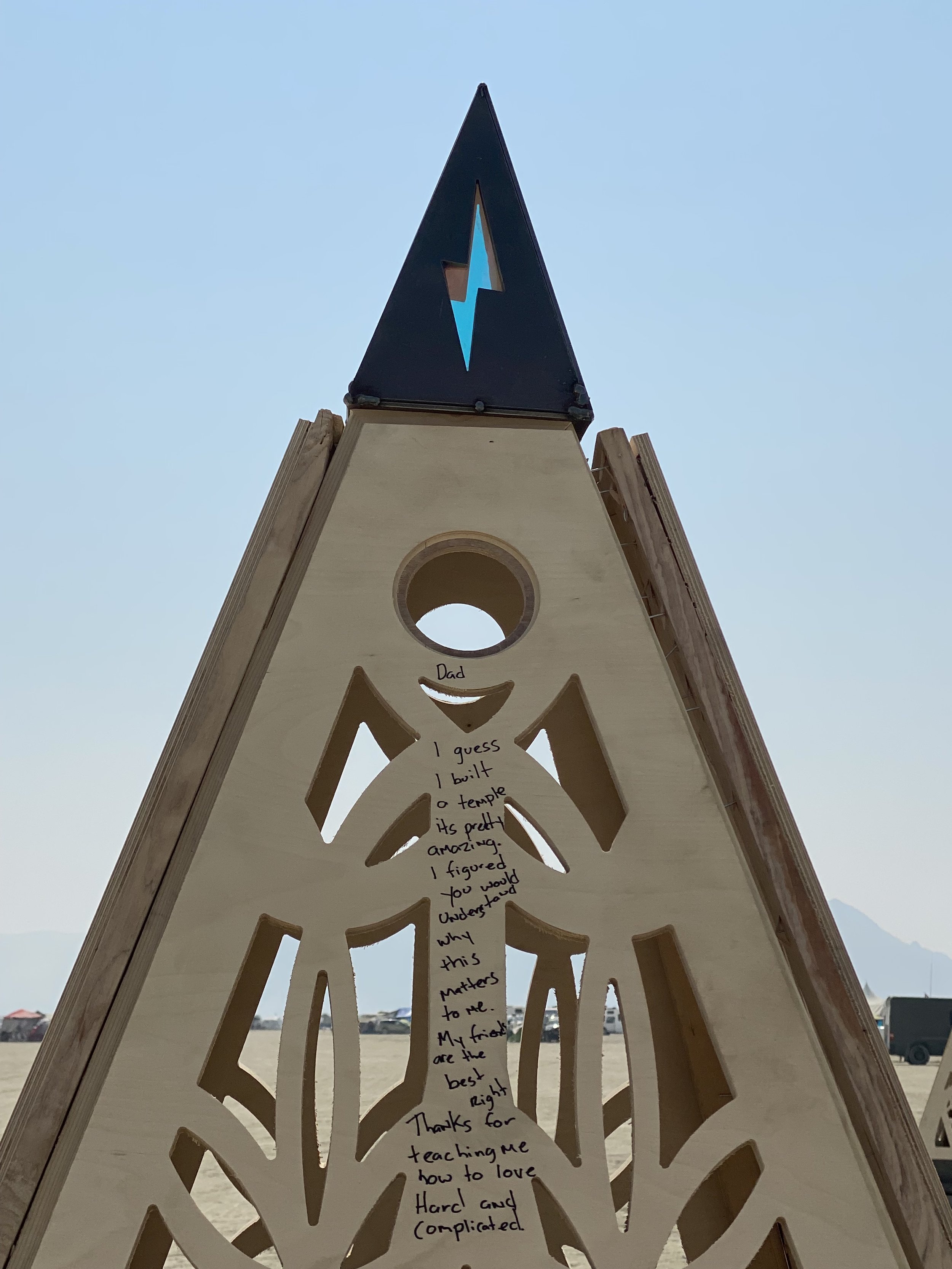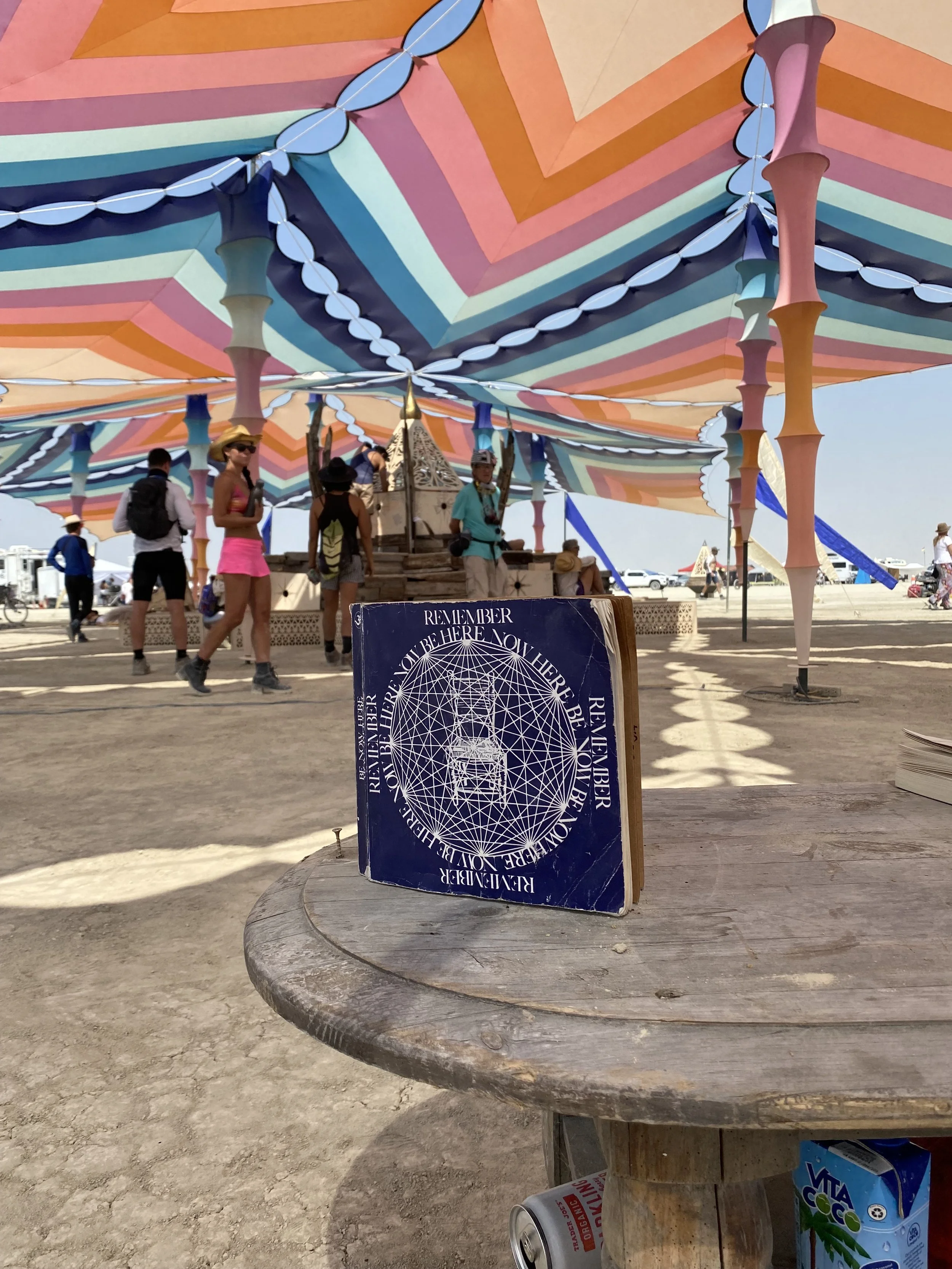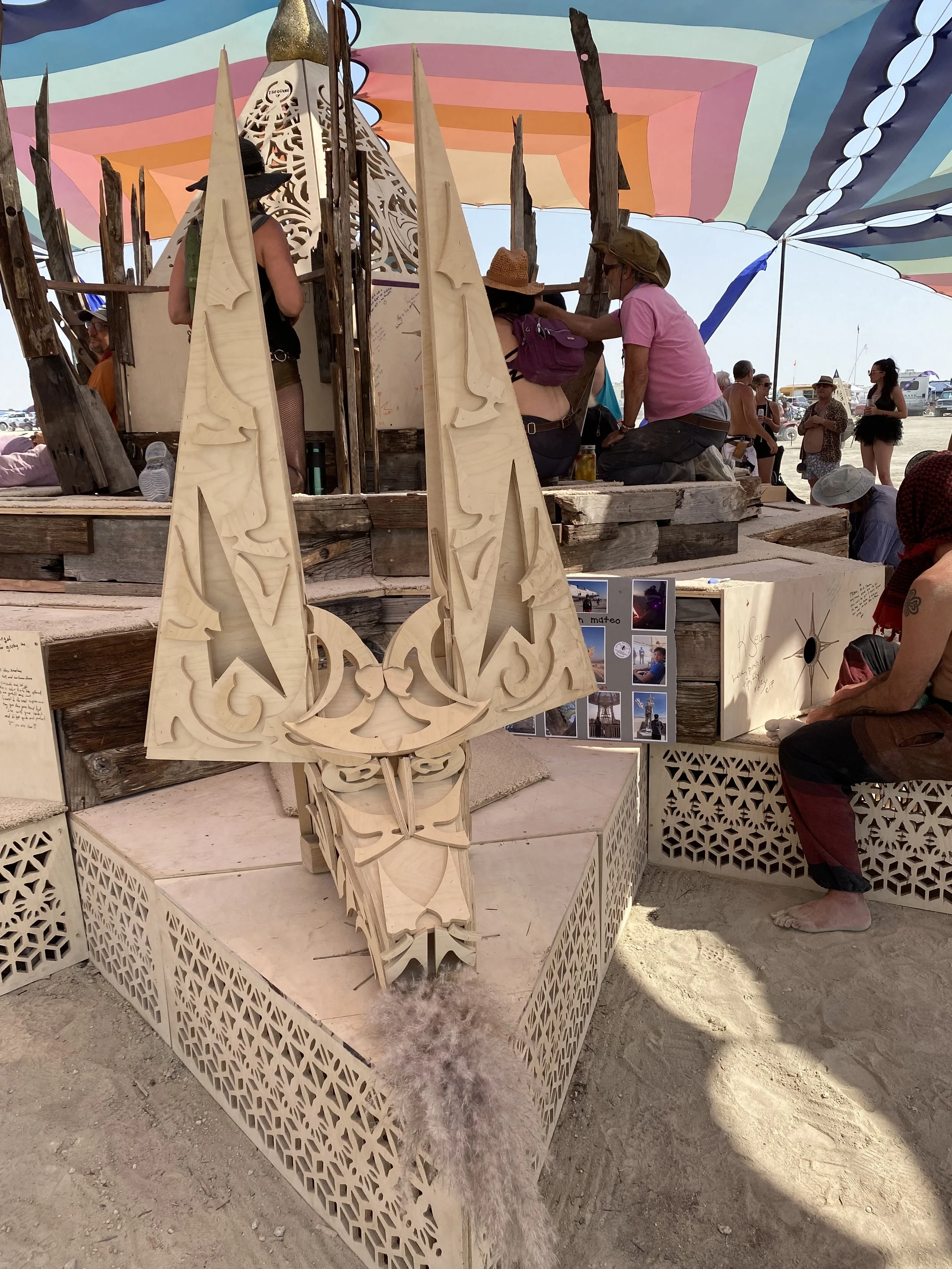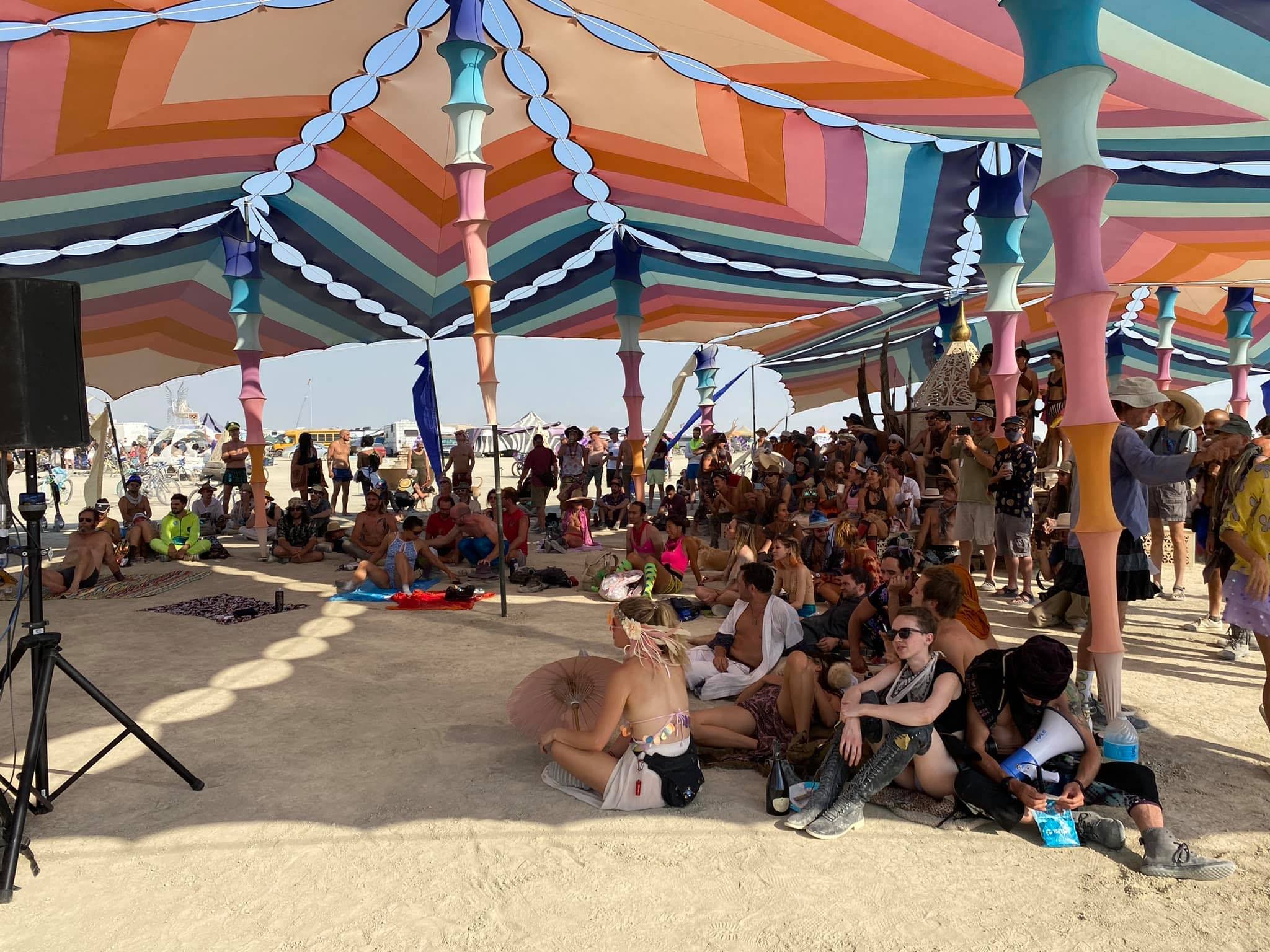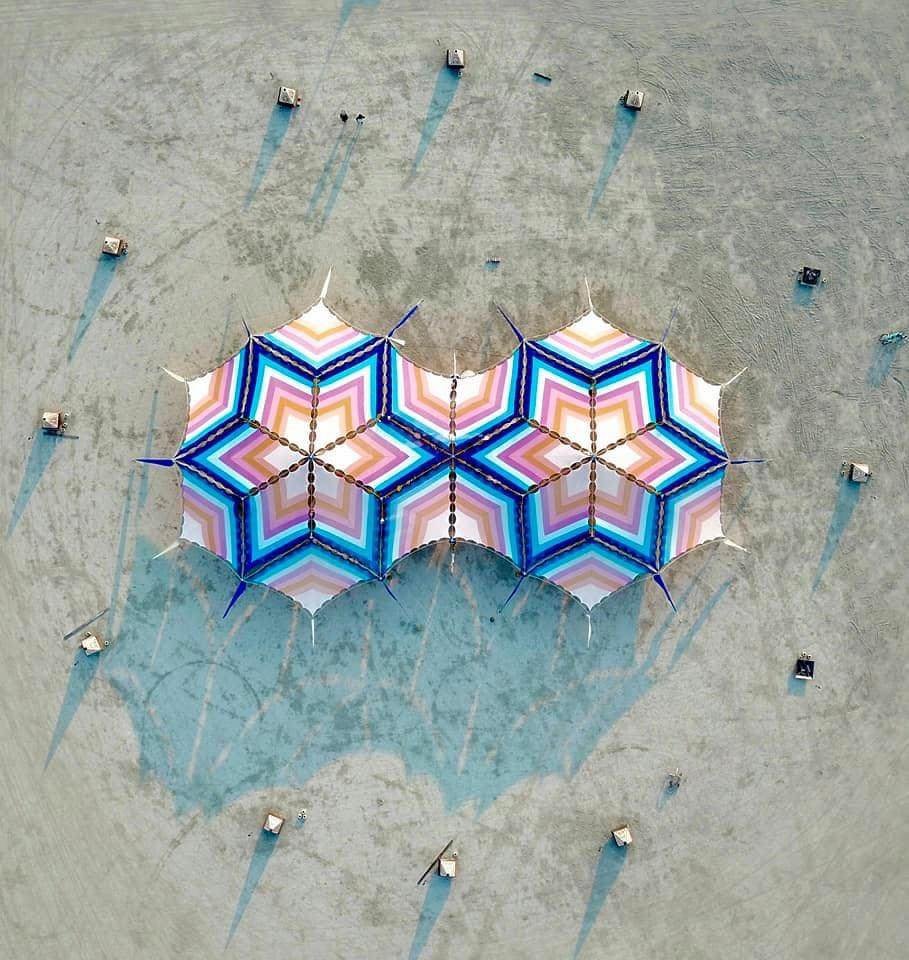Temple of Constraints
A Sacred Act of Improvisation in the Desert of Unknowing
When the world locked down and Burning Man was called off, a different kind of invitation emerged—not from a ticket or a placement, but from the whisper of dust and the ache of collective grief. Amid the uncharted landscape of the Renegade Burn, we built a temple. Humble funding. No official sanction. Just a call to serve, an old trailer, and the kind of trust that only the desert knows. This was not a build—it was a devotional act.
We called it the Temple of Constraints.
Because we had no time.
No support systems.
No permission to burn.
But we had grief. We had beauty. We had each other.
And through radical interdependence and the slow burn of intention, we raised a place of silence and spaciousness. Not in spite of constraint, but because of it. The temple held offerings made from stories, not spectacle—simple gestures of awe, surrender, and transformation.
It stood not as a monument to what we lost, but as a reminder of what we carry forward: the sacred is always possible.
-
Description Though the vision was seeded in my grief, the temple wasn’t mine alone. It was a co-creation woven from the YES of many souls. What began as a humble intention grew into a symphony of generosity, artistry, and trust.
Former temple builders showed up with hammers. An art crew from Nevada City crafted ten glowing cauldrons to represent the Tree of Life in the Kabbalah, and I spent each day zen-raking the pathways between them, each stroke a prayer. Kasey Fairy and the team from Ambient Architecture helped us create a sunset-inspired shade structure—an homage to Sean, who always chased the colors of dusk.
When the future of the build was uncertain, we created a nature mandala in the dust: black stones spelling out “Black Rock Matters,” a temporary shrine to stillness and solidarity. We honored the land, even when the outcome was unclear.
One camp dreamed of a memorial concert to honor those lost. We said yes, and they played the music of a year’s worth of grief beneath the stars, turning mourning into melody. It was their dream, and the temple gave it form.
Even the final burn—an act many thought impossible—came together through long negotiations with government agencies, held together by community resolve. The circle of fire was protected by volunteers who simply appeared, offering presence and care. Other camps offered to cover our legal fees, just in case.
We said yes.
And the world said yes with us.That is the heart of the temple.
It wasn’t built—it was answered. goes here -
Description text In the span of ten days, I lost my father, my best friend Sean, and a visionary who shaped my community, Tony Hsieh. Each loss carved a different canyon in me—and I couldn't hold it all in one place. So I went on the road. A Kerouac-style pilgrimage of grief and grace. I planned funerals, launched Sean’s final album, gathered flowers from a mushroom farm for his body, and held hands with my dad’s people in Oregon.
Rachel and I went inward. There were moments of deep soul-diving, as if the world was underwater, muffled by COVID and the weight of goodbye.
And then—we built a temple.
Not just for them. But for everyone who carried a grief they didn’t yet have words for. We made space for reverence and irreverence. For stories told in silence. For music that needed no applause. For the sacred that isn’t showy.
This temple wasn’t about architecture. It was about acknowledgment.
The kind of design that says: you are not alone. here -
The temple was a living prototype of sacred UX. It wasn’t designed for spectacle, it was designed for surrender. We observed. We listened. We placed cloth and silence where people needed softness and space. This was design without ego—form following feeling. Inspired by human-centered design principles and contemplative practices, we created a space that offered sensory rest, emotional processing, and quiet transformation.
The temple became a place of co-creation, where meaning was made not through instruction but invitation.
It wasn't branded.
It wasn’t explained.
It simply existed—and that was enough. -
No blueprints. No grants. Just a beat-up trailer, a few salvaged tools, and the wide-open willingness of people who felt the call. This was sacred architecture born not from planning, but presence. Every board placed was a prayer. Every knot tied in the cloth, a poem. The temple emerged like a mirage and landed like truth.
And then—people came.
Visitors entered barefoot and left quieter. Some cried. Some left notes. Some played music in silence. It wasn’t about performance. It wasn’t “activated.” Reverence did the work.
This was not just an altar. It was a practice in decentralized, decolonized ritual space. With no leadership hierarchy and zero cost of entry, the Renegade Burn became a radically inclusive gathering. BIPOC folks who had never felt welcome at traditional Burns came in numbers. The absence of bureaucracy created presence. The lack of gatekeeping created welcome.
There was no “man” to burn that year—just a drone show that blinked out a simulation. And so the temple became the symbolic center. People left their grief on our altar. Temple guardians arrived not by assignment but intuition, quietly showing up to hold space.
It was an exercise in sacred self-organization.
We didn’t ask for help.
They came anyway.It became the real temple, because it was everyone’s.
A shared act of listening, building, and belonging. -


